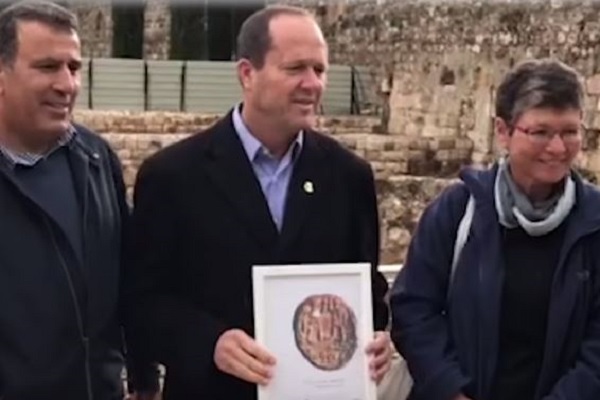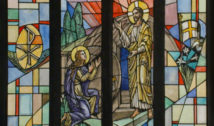
Ancient Clay Seal Discovered in Jerusalem
- By Derek Welch --
- 02 Jan 2018 --

It is believed to date back to the First Temple era
Israeli archaeologists working for Israel Antiquities Authority dug up an ancient artifact, a clay seal dating back 2,700 years, in Jerusalem's Old City[/tweetit]. This artifact may have belonged to the city's governor during the First Temple period. This finding came after five years of excavating the site. The artifact had ancient Hebrew script inscribed on it. Nir Barkat, the present Jerusalem Mayor, was presented with the find. It will be kept in the office of the mayor as a temporary exhibit. The seal looks like a coin. It shows two individuals facing each other standing up. Both are seen to be wearing striped garments of knee length.
Ancient Clay Seal Discovered in Jerusalem[/tweetthis]
Archaeologists have translated the script. The inscription when translated into English reads, “Belonging to the governor of the city.” Historians are elated with the find. Even the present mayor is humbled, saying that to receive some sort of message from Jerusalem city's first temple period is an overwhelming experience. The Bible mentions the governors of the city two times. One of them was Joshua, appointed to the position during King Hezekiah's reign and the other Masseiah holding the mayoral position during Josiah's administration. The Israeli Antiquities Authority announced that the results of the excavations support the theory that the Bible can be construed as a kind of historical document. This is important at a time when U.S. President Donald J. Trump has supported the declaration of Jerusalem as Israel's capital city. The United States Embassy is expected to relocate from Tel Aviv to Jerusalem.
Shlomit Weksler-Bdolah, an excavator of the Israel Antiquities Authority, said other than proving the Biblical accounts are in tandem with real events, the seal served an important function with ancient transport. Its other uses, he said, could be as a small souvenir, sent by the then Jerusalem governor to an important personage. The governor position at that time was the highest post attainable.
Weksler-Bdolah said that the site was dug from the Western Wall level and went down to bedrock. This tiny clay piece is termed a docket. It is one of seven seals discovered at the site. Other than the seal, another artifact dating back to the same age was discovered in a dump site in Jerusalem in 2015. Yet another seal was unearthed in 2016. This seal is believed to be the property of a woman.



















